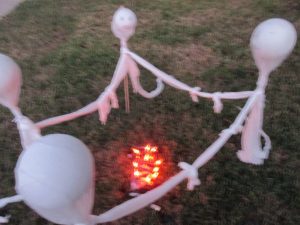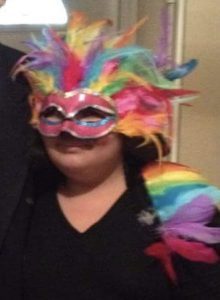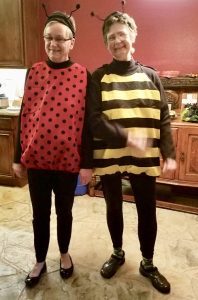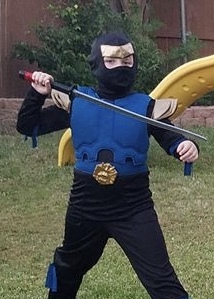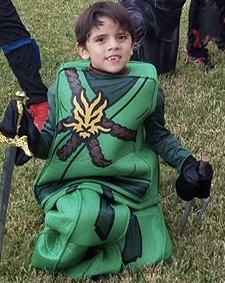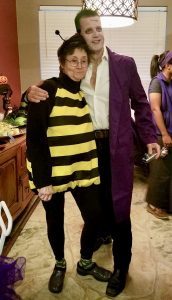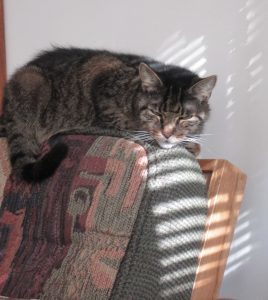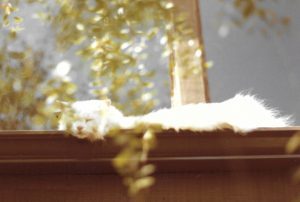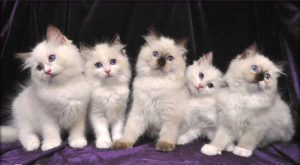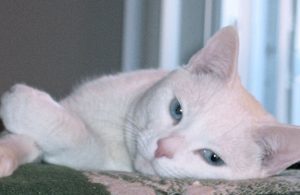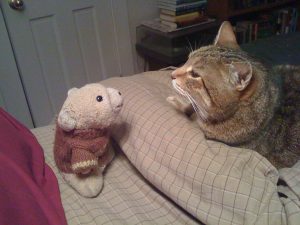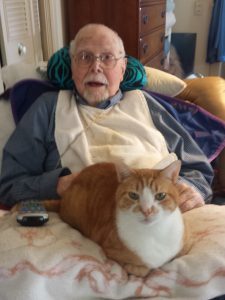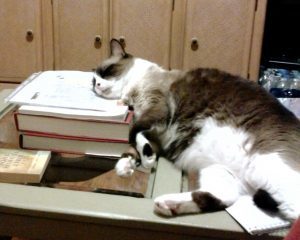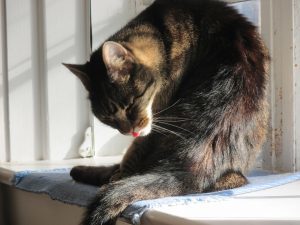Dean Robertson's Blog, page 6
November 25, 2016
“We are saying thank you . . . and waving/dark though it is”
November 18, 2016
Bates Webster’s New Photographs: For everything there is a season
November 12, 2016
Portraits ++ The Baptist. An Unlikely Man
November 5, 2016
Portraits ++ A Man, a Mountain, a Puppy, a Wolf, and a Few Raccoons
October 29, 2016
Portraits ++ Richard Rossi Live
October 25, 2016
That’s Right Folks: Another Test Post (Don’t Ask :-(
October 23, 2016
Caleb and Carter’s 5th Annual Boo Bash: A Bumblebee and a Ladybug
The Very First Halloween Party October 2012[image error]
Five years ago, in October of 2012, Caleb and Carter Guerrero hosted their first Halloween Party. Caleb had just celebrated his seventh birthday. His brother, Carter, was three. Attending were seven of Caleb’s classmates, Carter, their cousin, Malena Toulou, who was nine, and two of her friends. It was a modest affair.
The Boo Bash October 2016
I have flown in to attend Caleb and Carter’s 5th Annual Boo Bash. Invitations were posted on Facebook and over twenty adults responded; a head count tells me there are probably twice that many children. All guests, adults and children, have been asked to come in costume.
Approaching the house, I was aware that this would be a big event.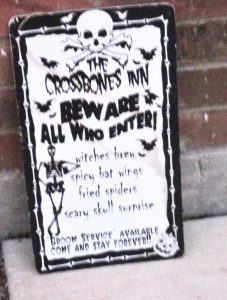
Carter and Caleb’s mother, Elizabeth, and Malena’s parents, Grace and Jeff, always out-do themselves, but as Malena has grown into an exceptionally creative young woman, she has often been the star.
This year, at fourteen, she is more reserved and I find her sitting quietly in the library.
Caleb and Carter’s Boo Bash started at 6:00 and can, I understand, go on until as late as 10:00.
I have come as a bumblebee. My first cousin, Jane Riley Gentry, grandmother to Malena, Carter, and Caleb, has donned a ladybug costume. We are garden creatures.
I’m not the only photographer at this bash and, before the party is over, pictures have begun showing up on Facebook. There are photographs of children and photographs of adults. Perhaps the most photographed guest is an eight-month-old baby girl in a knit cap with ears and what appears to be a monk’s robe.
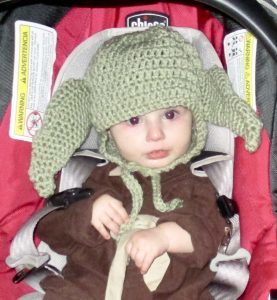 There are children everywhere in this spacious, comfortable suburban home. There are children in the back yard, hanging from the top bar of a swing set that the boys have transformed over the years into a piece of gymnastics equipment or staging mock fencing duels; there are children in front shooting baskets; there are children gathered inside to plan their next foray.
There are children everywhere in this spacious, comfortable suburban home. There are children in the back yard, hanging from the top bar of a swing set that the boys have transformed over the years into a piece of gymnastics equipment or staging mock fencing duels; there are children in front shooting baskets; there are children gathered inside to plan their next foray.
The children, with few exceptions, have adopted conventional costumes–the boys dressed as warriors, the girls–with a small nod to new possibilities–in pink satin versions of male heroes.
This 5th Annual Boo Bash is a celebration of a traditional American holiday, twenty-first century style. Elizabeth has rushed home from her high-powered job to tend to the elaborate preparations which include an impressive feast and decorations in every room of the house. She explains, that because of an intensified travel schedule at work, she has done a much less thorough job than in years past. Nonetheless, the house looks impressively “done up” for Halloween, with lamps draped in black netting and spiders and ghosts around every corner.
Finally, this party serves as a time out of time when family and friends gather to spend a few hours together. We are all people with busy lives, lives filled to capacity with work, with children and grandchildren, with reading, writing, trips to the gym, shopping, housekeeping–with life.
A year ago, I flew into the Dallas/Fort Worth airport, was met by my cousins, and was driven back to Mansfield, Texas, to spend nearly a week with Jane, seeing her daughters for the first time in years, meeting her grandchildren for the first time ever. When I was getting ready to leave, Carter and Caleb both said, “Oh, Aunt Dean. We wish you could stay for our party.” I explained that I couldn’t but promised them I would come back this year and would wear a costume.
And so I found myself, in October of 2016, standing in the Guerreros’ kitchen, exchanging pleasantries with the parents of members of the children’s tribe that swarms around us, never further than arm’s length from a member of my own tribe, embracing that feeling that comes to me only in the company of family.
I am dressed as a bumblebee.
October 21, 2016
Testing from Texas: Please Comment
Good morning, subscribers. Once again the subscriptions for my blog seem not to be working. If you got “Three Weeks With Wilson” yesterday or are seeing this test blog today, could you comment and let me know? I am getting beyond frustrated with these ongoing problems!!
October 15, 2016
Three Weeks With Wilson. Memories of Felines Past and Present.
My neighbor, Dan, who lives just across the hall in this old co-op building, left last Wednesday to spend three weeks with his mother in Cape Town on the coast of South Africa. Susan works for part of the year at the University of Cape Town on a global rheumatic heart disease eradication project, and this is Dan’s first trip.
He is sending back spectacular photographs, but he did confess, in his most recent email, that the reports from Wilson’s many friends that he was “extra affectionate . . . makes me miss him even more.”
Like any normal little girl–at least one growing up in the hills of North Georgia–my first cat was named Tiger. He was a small tiger-stripped stray. He looked a lot like Wilson. We lived in the woods. My father had hunting beagles. It would have been unthinkable to have an animal in the house. Tiger was an outdoor cat. After my father died, during my senior year in high school, I left for college, my mother sold the house, and I don’t know what happened to Tiger.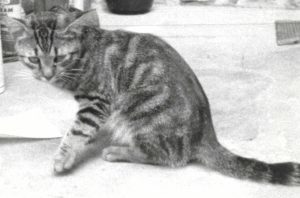
I spent many years with “indoor-outdoor” cats. The indoor part was because I really wanted them purring in my lap at night when I was reading; the outdoor part was because I had grown up with the firm-and completely false-belief that cats need to be outside. The result of these terrible years was that I either lost my cats to cars, dogs, or raccoons, or endured the fruits of their own predatory natures deposited on my doorstep or brought in through the cat door–sometimes to be polished off in the living room.
The list of these ill-fated cats includes Grindl, Ronald McDonald, Gordon, Stella, Beast and Beardsley, Twig and Leaf. Twig and Leaf were my Come-to-Jesus moment. Leaf disappeared. Twig was gone for nearly a week and returned with a deep puncture wound in his neck which should have killed him, but didn’t. I spent almost two weeks with a panicked cat wrapped in my J Crew barn jacket, struggling to get away, held tightly to my chest, until finally he was able to settle down.
I learned that sometimes being restrained, wrapped away from your own fears, is the best medicine. Temple Grandin whose autism prevented her accepting touch from others, built a soft-belt restraining chute for herself, modeled on the one she had designed for her cattle. When I had llamas, I purchased a similar chute that had been modified for these particular animals. When they were partially restrained, they would struggle. Once they were fully and gently restrained, they let go. My llamas loved that restraint.
Grindl was the first cat I had as an adult. She was a Siamese and her claim to fame in my memory is that she slept in the cradle with my son from the day he came home from the hospital. Of course, I heard all the tales of cats sucking the breath out of babies and listened carefully to my friends’ dire warnings.
Then I sat for hours watching my baby and his first cat sleeping soundly, the baby making those wonderful snuffling sounds that babies make, the cat purring contentedly, wrapped around his diapered bottom. My now middle-aged son has always had a cat.
Ronald McDonald and Gordon were the victims of cars going too fast on a residential street. Beast vanished.
Beardsley was taken down by neighborhood dogs. Stella was gone for a week and came home with an injured eye that had to be removed. She lived a long life, always just off balance when she tried to jump.
The first of the indoor cats was little Abraham, a beautiful pink Persian who was sick when I got him but managed a very happy eight years before his auto-immune deficiencies took him. The last year of his life he was on an Aids medication and he jumped right up on the kitchen counter every morning for his dropper full of banana-flavored meds.
And now I have Isaac, who officially adopted me on January 21 2007, the worst looking white cat you can possibly imagine. I was finally through grieving for Abraham and was happily shopping for Ragdoll kittens. I had made up my mind to invest the outrageous sum of $600 per kitten.
I did not want a three year old, short-haired, alley cat. Before January 21, Isaac had been hanging around my apartment and, of course, I was slipping him the occasional bowl of milk–well, alright, Half and Half. But I was determined not to take him. But on the 21st, I arrived home from my son’s birthday brunch, and there was Isaac again. This time one paw was hanging loose. It was a Sunday. I took him in and he slept quietly on the sofa all night. Monday morning I took him to the vet to have him neutered and cleaned up. They couldn’t perform the surgery because he was running a high fever. Eventually, we were referred to an osteoarthritis veterinarian. As the vet bills mounted, my son and I would look at each other and say, “One Ragdoll.” “Two Ragdolls.”
Today, as I type, Isaac is sleeping in the afternoon sun coming through my old casement windows. He follows me from room to room, never far away.
I have met friends’ cats and cousins’ cats and strangers’ cats, have written about cats I’ve never met.
Which brings me back to Wilson, waiting patiently across the hall for my next visit.
Wilson, ironically, is an indoor-outdoor cat. When he can’t be outside, he follows the sunlight from window to window.
Wilson is remarkable. Dan opens the back door and Wilson wanders out and down to the grass outside our building to roll around, munch on the greens, and eventually wander back home.
 He never goes further than the back yard, never goes near a street. All the benefits of outside living without the risks. Wilson seems to have figured it out. And I’m growing fond of him.
He never goes further than the back yard, never goes near a street. All the benefits of outside living without the risks. Wilson seems to have figured it out. And I’m growing fond of him.
You can visit Wilson in Norfolk, Virginia.
You can buy my book, Looking for Lydia; Looking for God from Amazon.
Isaac makes a cameo appearance in Chapter Ten.
One of my favorite cats was a llama
October 8, 2016
Katie Andraski, “The River Caught Sunlight”: An Interview with Richard Rossi
On October 1, I received an email from fellow author, Katie Andraski, letting me know that on Monday October 3 she would be interviewed by Richard Rossi on Blog Talk Radio. On the website, Rossi called the interview “Katie Andraski Discusses her Controversial Novel, The River Caught Sunlight.”
And controversial the novel is. In a review of The River Caught Sunlight, published on February 4 of this year, I wrote:
“Katie Andraski has dared to write about the radical evangelical movement in this country, about her own part in that movement, and about the subject terrifying to those on both sides–the awful issue of abortion.”
As he introduces her, Rossi points out that the two of them seem to have travelled “parallel paths”–both with Fundamentalist backgrounds, both having fallen under the sway of Frank Schaeffer, the real-life counterpart of Andraski’s fictional character, Jeremiah Sackfield, and both having come to question what Rossi calls “the totalitarian environment” and “the cookie cutter world” of the Fundamentalist movement.
He begins the interview by asking about Frank Schaeffer.
Katie Andraski first encountered Schaeffer, a celebrity of Evangelism in the 1980’s, when she was working as a publicist for Crossway Books. She travelled with Schaeffer and his parents as she convinced editors at publications like The New York Times, Publishers Weekly, Newsweek, and Christianity Today to feature their books. She was good at her job.
Later Frank Schaeffer told her that he knew she didn’t agree with his work, but it didn’t matter because she did the job so well. She got him the publicity. “He wrote me a wonderful letter towards the end of my work there.”
Katie talks at some length about her increasing discomfort with his “screaming and shouting.” She was torn and “troubled by the radical nature of what the Schaeffers were saying.” A turning point for her was their growing insistence that you weren’t a Christian if you didn’t condone the most extreme behavior of the anti-abortionists.
And so began a thirty-year journey for Katie which bore the rich fruit of her novel.
But she did not make her journey out of the darkness alone.
Above the title, on the front cover of The River Caught Sunlight, is perhaps the novel’s most poignant endorsement. Frank Schaeffer, author of New York Times‘ best-seller Why I am an Atheist Who Believes in God (2014), says,
“This book has a piercing insight at its heart as humane as it is damning of religion gone off the rails.”
Rossi points out the irony that Schaeffer, “In wanting to be more Christ-like, had to get out of the religion business.”
And that defection didn’t go unnoticed. In August of 2011, The New York Times reviewed Schaeffer’s memoir, Sex, Mom, and God, under the headline,
“Son of Evangelical Royalty Turns His Back, and Tells the Tale.”
The discussion during this forty-five minute interview ranges from the Religious Right, to the current political environment, to the healing power of art. Andraski says that, of course, the telling of her story was tremendously therapeutic, but she adds that the artistic work itself–learning how to write a plot, editing, writing “revision after revision after revision” moved her toward a new wholeness.
My acquaintance with Katie tells me that she is a woman who understands the healing balm of hard work–whether in writing a novel or in tending her horses.
Perhaps above all else, she says of her main character, “Janice has a voice that I never had.” And in the novel’s final pages, Janice stands up in front of Sackfield and his followers, and says,
“Jeremiah has just told you how to be afraid, how to be bullies, how to throw your weight around . . . If this is Christianity, I don’t want it . . .But you know what? It’s not. It’s found on our knees asking the Lord and our neighbor to forgive us the things we’ve done wrong.”
I believe that Katie Andraski has a very strong voice, and not just through the fictional Janice Westfahl. When asked by Rossi whether she had a crisis of faith and how she processes doubt, she responds,
“I always write from a question, from things I don’t understand.”
This is a woman who takes risks.
Of her hard-won and finely-chiseled beliefs, she says,
“Christianity is a living and vibrant faith. We can grow with it. It can grow with us . . .Scripture is very complex. It can be alive. I see one thing as a fundamentalist and another as I grow and move forward.”
Katie Andraski, author of The River Caught Sunlight, has found her voice and has embraced a faith that, as Luke writes of Jesus, goes “about doing good.”
Buy The River Caught Sunlight from Amazon.com
Tune in to Richard Rossi Live, and listen to his many fascinating interviews, on Blog Talk Radio
Buy Looking for Lydia; Looking for God from Amazon.com

